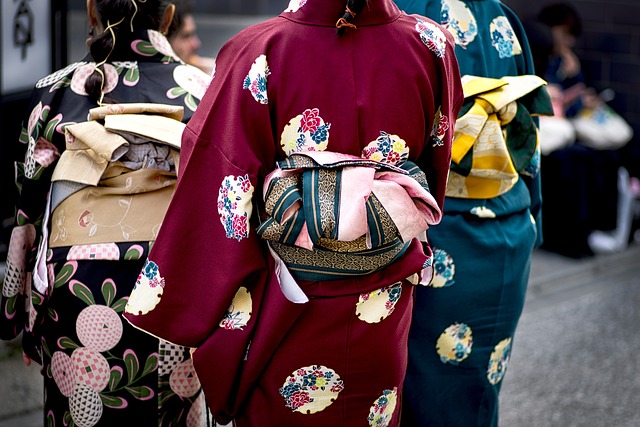The media portrayal of the Ducks women's basketball team has evolved significantly, reflecting societal strides in sports equality and recognition. From early marginalization and superficial coverage, the team's prominence in the 21st century led to increased national attention through TV, digital platforms, and social media. This shift not only brought better access to games but also celebrated the exceptional talent and dedication of Ducks players, fostering wider appreciation among fans nationwide. However, stereotypes and simplified narratives still prevail, impacting public perception; a more nuanced approach highlighting strategic prowess, resilience, and personal growth can capture the team's diversity and foster a comprehensive understanding.
The media portrayal of Ducks women’s basketball has evolved significantly over time, reflecting broader societal shifts. This article delves into the historical perspective, tracing the media narrative from its beginnings to recent successes. We explore key milestones and shifts in coverage, analyzing how stereotypes and narratives have influenced players’ perceptions. Additionally, we highlight the positive impact of media attention during championship runs and discuss challenges, advocating for more authentic and diverse storytelling to encompass the full complexity of the Ducks women’s team.
- Historical Perspective: The Evolution of Ducks Women's Basketball Media Coverage
- – Tracing the media narrative over time
- – Key milestones and shifts in coverage
- Media Portrayal: Stereotypes and Beyond
Historical Perspective: The Evolution of Ducks Women's Basketball Media Coverage

The media portrayal of the Ducks women’s basketball team has evolved significantly over the years, reflecting broader societal shifts in sports coverage and the increasing importance placed on female athletes. Historically, college basketball received less mainstream attention compared to its men’s counterparts, with media outlets often devoting fewer resources to women’s games. However, as the 21st century progressed, a growing emphasis on gender equality in sports led to increased visibility for Ducks women’s team.
Key milestones include more comprehensive TV broadcasts of women’s tournaments, greater digital coverage through online streaming platforms, and heightened interest from national media outlets. This evolution is not just about better access to games; it signifies a broader recognition of the talent, skill, and dedication demonstrated by the Ducks women’s basketball players. As a result, fans across the nation have had the opportunity to appreciate the athletic prowess and competitive spirit that define this esteemed team.
– Tracing the media narrative over time

The media narrative surrounding the Ducks women’s basketball team has evolved significantly over time, reflecting broader societal shifts in how we view and cover female athletics. In the early years, coverage was often limited to local news outlets, focusing on the team’s success within the conference and regional competitions. This period saw the Ducks establish themselves as a consistent powerhouse, winning several regular season and tournament titles, but media attention remained relatively niche.
With the advent of social media and 24/7 sports networks, the Ducks women’s team began to gain traction on a national scale. High-profile games and tournaments became must-watch events, with media outlets clamoring for exclusive coverage. The narrative shifted from highlighting individual stars to showcasing the team’s collective strength and strategic plays. This shift not only elevated the profile of the Ducks but also contributed to a broader trend of increased visibility and respect for women’s basketball at the collegiate level.
– Key milestones and shifts in coverage

The media portrayal of the Ducks women’s basketball team has witnessed a significant evolution over the years, mirroring broader societal shifts in how female athletes and their achievements are recognized. Early coverage often lacked depth, focusing primarily on basic game results and occasional feature stories that painted a one-dimensional picture of the team. However, starting from the turn of the millennium, there was a noticeable increase in media interest, driven by the Ducks’ growing success on the court and increasing fan base. This marked a key milestone, as the narrative expanded to include detailed analyses of strategic plays, player profiles highlighting individual talents and storylines, and in-depth interviews that showcased the athletes’ personalities.
The digital age has further revolutionized how the Ducks women’s team is portrayed in the media. Streaming services and dedicated sports websites have made live games more accessible globally, fostering a sense of community among fans. Social media platforms have also democratized content creation, allowing players and coaches to share their experiences directly with followers. This shift has not only enhanced fan engagement but also contributed to a more nuanced understanding of the team’s culture and dynamics. As a result, the Ducks women’s basketball team has emerged as a prominent force in both college sports and media narratives, inspiring increased coverage that celebrates their achievements and challenges stereotypes.
Media Portrayal: Stereotypes and Beyond

The media portrayal of the Ducks women’s basketball team, like any high-profile athletic group, is a complex narrative that involves more than just game highlights. Often, stereotypes and simplified narratives dominate coverage, reducing the players to archetypes rather than individual athletes with unique stories. This phenomenon can impact both the perception of the team and the opportunities available to its members.
Stereotypes in media can range from portraying female athletes as solely driven by appearance or menial achievements to oversimplifying their personalities and skills. In contrast, a more nuanced approach would capture the diversity within the Ducks squad, highlighting their strategic prowess, resilience, and contributions beyond the court—all of which are vital elements that contribute to the team’s success and the personal growth of its members.














